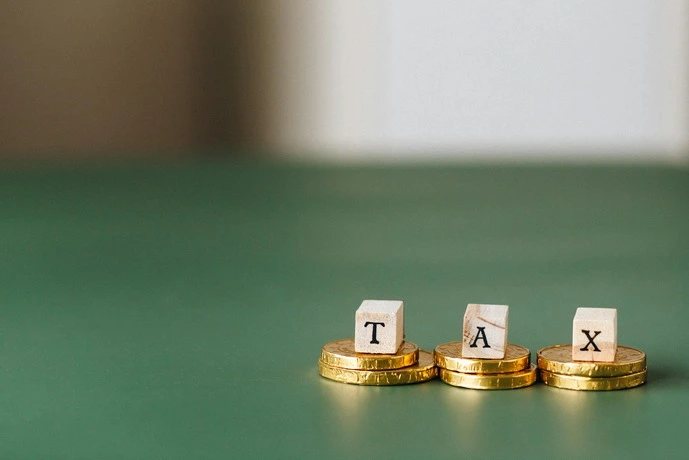Fixed deposits are popular investment options banks offer that provide guaranteed returns on the invested amount for a specific lock-in period. Tax-saving FDs have the added benefit of tax deductions under Section 80C of the Indian Income Tax Act, making them useful for long-term financial planning.
Unlike regular FDs, they have a compulsory 5-year tenure to avail tax benefits. However, they provide lower interest rates. The article covers how understanding the difficulties of investments can help individuals make informed investment decisions.
Benefits of Tax Savings Under Sec 80C
By investing up to Rs 1.5 lakhs in tax-saving fixed deposits, individuals can reduce tax liabilities under the 80C deduction clause. This exemption helps reduce annual tax burdens and channels savings into a productive fixed-income avenue.
However, to continue enjoying uninterrupted tax benefits, renewals into similar 5-year tax-saver deposits become necessary to keep the investment cycle active.
Returns Potential and Influencing Factors
Compared to regular FDs, tax-saving deposit rates are marginally lower due to their longevity and assured earnings at maturity. While regular deposits can earn up to 6.5-7% yearly returns, tax-saver FDs yield an average of around 6% currently for reputed banks.
For accurate returns, one must consider prevailing bank interest rates, credit ratings and liquidity scenarios before investing to lock in attractive tax saver FD rates for 5 years.
Impact of Five-Year Lock-In Clause
The compulsory 5-year tenure aims to restrict withdrawals and channel savings into nation-building, long-term capital formation efforts. Premature exits are not allowed, affecting liquidity for short-term needs. Therefore, this demands prudent financial planning for milestones like children’s education or retirement to avoid capital crunches later. However, to meet temporary needs, loans against tax-saving FDs are permitted by most banks.
Risk Evaluation of Tax-Saving FDs
Tax saver FDs carry no risk of capital erosion, offering guaranteed returns of over 6% per current rates. This assured income surpasses inflation, averaging 4-5%. Moreover, deposits below 5 lakh are protected by RBI-mandated DICGC cover. Compared to equity assets, the safety and stability are ideal for conservative investors like retirees.
Assessing Suitability for Investor Profiles
Risk-averse investors like seniors looking for stable tax-exempt income find tax-saving FDs ideal. Mandated lock-ins may not work for young investors if liquidity needs are high. Business folks can park contingency funds in these deposits separately from working capital needs. Thus, aligning investor profiles, priorities and time horizons for investments is critical before choosing tax-saving fixed deposits.
Utility in Achieving Long-Term Goals
Tax-saving FD helps accumulate maturity corpus for expenses slated 5 years later, like children’s higher education or wedding needs. Upon maturity, the lumpsum proceeds fund major future financial commitments forecasted earlier while mitigating tax burdens through the 80C rebate during deposit tenure.
Strategic Integration with Other Asset Classes
Tax-saving FDs should be combined with other assets like stocks, bonds, and real estate instead of representing the majority of portfolio exposure. Such strategic allocation across classes will balance risk and enhance portfolio stability.
Comparative Analysis with Other 80C Avenues
Compared to PPF or equity-linked tax savings schemes, they hold higher risk. But their inflation-adjusted returns exceed debt tax saving options like tax saver FDs, etc. Hence, both sets cater to investors’ needs based on risk desire.
AU Bank offers insurance unlike the former but charges higher fees, affecting gains. Overall assessment of pros and cons reveals tax saver deposits as stable, decent return generators for conservative lay investors compared to market-linked tax savings tools with higher volatility.
Cashing Out at Maturity
At maturity, the principal and compounded interest are credited to the linked savings account net of taxes if applicable. Premature withdrawals breach tenure conditions, resulting in lost accumulated tax benefits granted previously besides paltry returns. To avail of continuous 80C benefits, renewed allocation into similar 5-year tax-saving FDs becomes essential.
Integrating Tax Saver FDs in Investment Strategies
Assessing the need for assured tax-free income and allocating a portion of the portfolio into these deposits up to the Rs 1.5 lakh 80C limit helps. Periodic renewals after that ensure continuous tax savings are available.
Alternatively, investing incrementally each year in these Fixed Deposits builds a ladder with annual liquidity options upon maturity for varied needs.
Conclusion
Tax-saving fixed deposits offer conservative investors a way to earn stable, tax-exempt returns while accumulating wealth for long-term needs, all within a 5-year timeframe. These deposits can be integrated intentionally, keeping risk appetite in perspective to stabilise investment portfolios.

